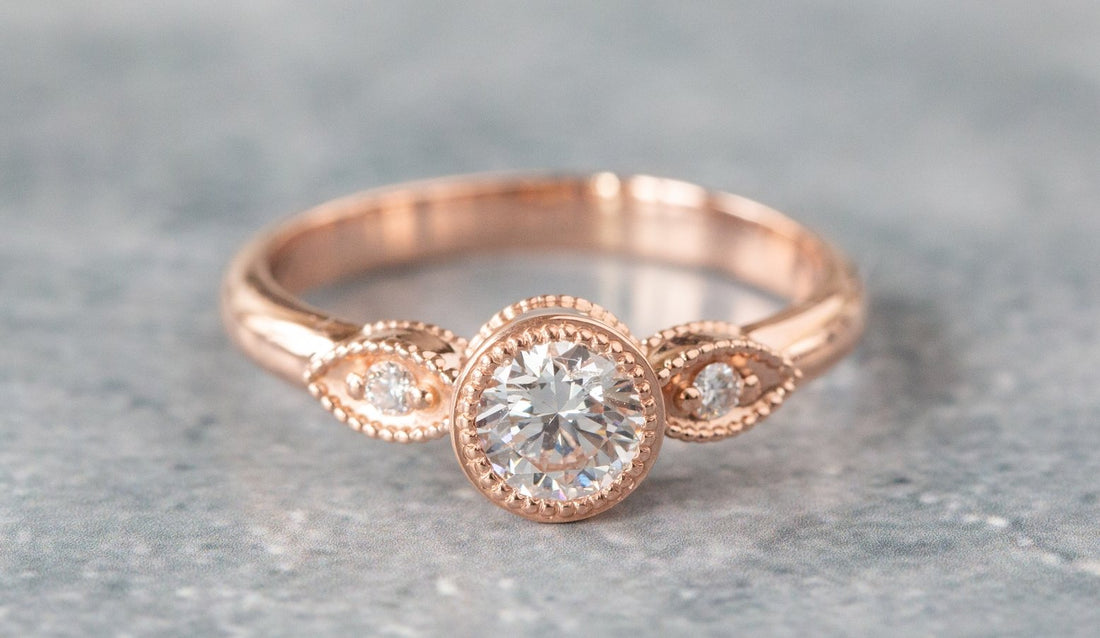The 4c’s of Diamonds and What They Mean
Choosing the perfect ring design is hard enough and picking the right stone can make the process even more daunting. You might know you want a diamond but then start looking at buying one and be confronted with “The Four C’s” - what are they? What does clarity in a diamond mean? How expensive is a 1ct diamond?
Don’t fret! We’re going to break down the 4Cs for you to create the ultimate diamond buying guide.
And don't forget to subscribe to our newsletter for more tips in your inbox!
The 4Cs stand for: cut, color, clarity, and carat. Let's break them down…
Cut

Cut is the only aspect of the 4Cs that is not determined by nature. It impacts how light will reflect off of and refract within the stone. This quality largely determines the brilliance, sparkle, or “fire” of the diamond. According to GIA (Gemological Institute of America), the cut of a diamond is rated as Excellent, Very Good, Good, Fair, and Poor.
If you are curious about what shapes a stone can come in here is another helpful blog for you!
Color

Diamonds follow a D-Z scale when it comes to coloring. D, the highest rating, is completely colorless and Z has a yellow hue. Most of the diamonds we source fall under D-J in grade (unless you are looking for a colorful stone!).
Having a diamond that has D coloring is often more expensive, but it is important to remember that color is based completely on preference and does not indicate quality whatsoever.
Clarity

Clarity refers to the number of imperfections otherwise known as inclusions that are present within a diamond. The GIA grading scale rates clarity from IF (flawless) to I (included). The scale is as follows: (IF) flawless, (VVS1) very very slightly included 1, (VVS2) very very slightly included 2, (VS1) very slightly included 1, (VS2) very slightly included 2, (SI1) slightly included 1, (SI2) slightly included 2, (I1) included 1, (I2) included 2, (I3) included 3. You can find a helpful chart with examples of each of these below.
A stone doesn’t need to be completely flawless to appear clear to the human eye too! You can get a beautiful stone and save a bit as well if you choose a stone that is anywhere from VVS1 to VS2.
Carat

Congratulations! You made it to the last of the 4Cs… carat! Carat refers to the actual weight of the diamond. So it is not a measurement of dimensions as many might think. One carat converts to around .2 grams (which for those of you who are equally as confused by the metric system that equates to about the weight of a paperclip). Carat and cost are directly correlated meaning the higher the carat, the more expensive the diamond will be.
We hope this quick diamond buying guide will help you in your search for the perfect ring! Make sure to check out our other blogs to learn more about different types of stones too (especially this one if you are looking for alternatives to a diamond)!


